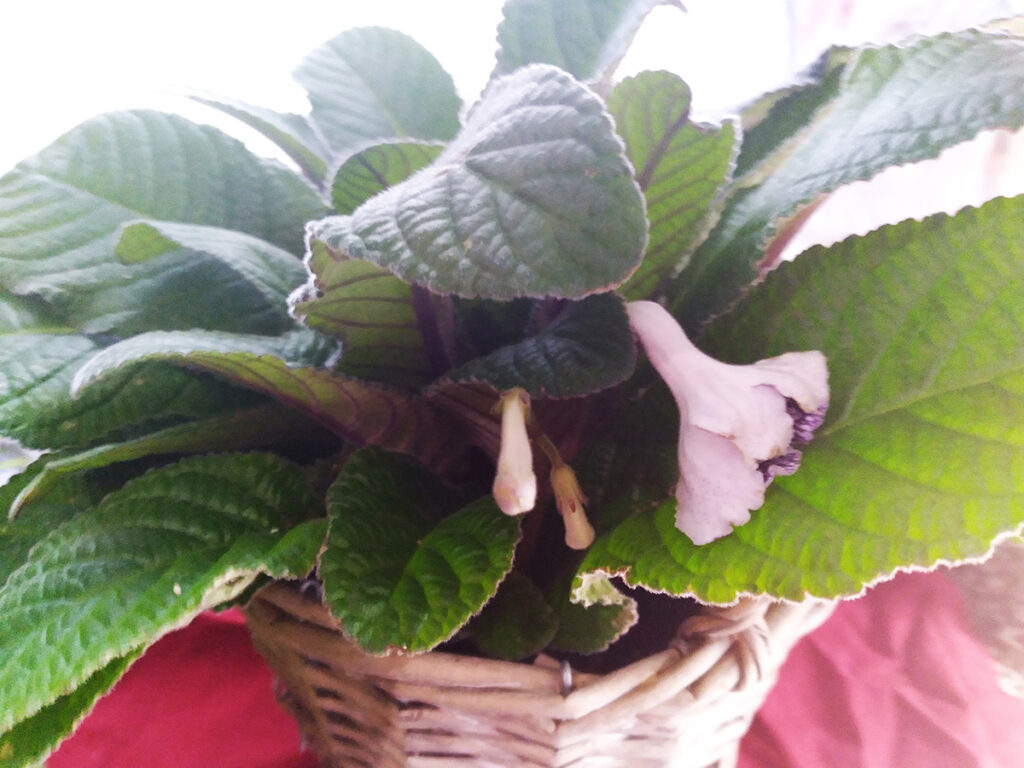By Deborah J. Benoit
Streptocarpus (Streptocarpus) is commonly known as cape primrose, but don’t confuse it with the common primrose (Primula vulgaris), a perennial plant that you may have grown outdoors at home. While the two share some physical similarities, their care requirements are quite different.
The common primrose in your garden is hardy in United States Department of Agriculture (USDA) Plant Hardiness Zones 4 to 8 (https://planthardiness.ars.usda.gov). On the other hand, streptocarpus is hardy in USDA Hardiness Zones 9 to 11, so they won’t survive year-round outdoors in cooler climates like ours.
Streptocarpus is native to tropical regions in southern Africa, where it grows in wooded areas in the mountains. It prefers warmer temperatures and moderate or indirect light. While you could grow this plant outdoors in warmer weather, be sure to bring it indoors before temperatures drop below 50 degrees Fahrenheit.
Like many other tropical perennials, streptocarpus is marketed as a houseplant. It is related to African violets and thrives with similar care and conditions. It is easy to grow and can provide colorful blossoms, even during the cold winter months.
Because they don’t require bright light, they’re ideal for growing near a sunny window. Just be sure to avoid a direct southern exposure because strong sunlight can damage the leaves.
Don’t allow the soil to dry out completely. Likewise, don’t overwater. Water when the top layer of soil is dry, and avoid getting water on the leaves.
Feed with a flowering plant fertilizer or one intended for African violets according to package directions.
As needed, remove damaged leaves, faded flowers, and stems. Leaves can also be trimmed to remove minor damage.
Streptocarpus are compact plants. Their long, velvety, green leaves grow in a rosette, with trumpet-shaped flowers rising above the leaves. Flower colors include shades of red, purple, blue, white, yellow, and variegated combinations. This houseplant can put on a flowery show for months at a time.
Mature plants grow to between 6 and 12 inches high and from 18 to 30 inches in diameter, depending on the variety. They will do well in a 5-or 6-inch pot.
Repot when the plant fills its container. Choose a light, well-draining potting mix such as one intended for African violets.
At that time, plants with multiple crowns can be divided. Separate the crowns by gently easing them apart and potting each section individually.
Like African violets, streptocarpus can also be propagated from a leaf, although the method is slightly different.
Prepare a small seed-starting tray with a light, soilless potting mix that has been moistened.
Select a healthy leaf. You can either trim off a 2-inch piece of leaf while still on the plant or harvest the entire leaf and cut it into 2-inch sections.
Draw a furrow in the potting mix and place each section into it, with the lower cut edge beneath the surface. Firm the soil around the leaf section.
Place the container in a plastic bag or under a clear cover and put it in a warm, well-lit spot in indirect light. Open the container to allow excess humidity to escape, or add water if needed.
Over the next four to six weeks, tiny plantlets should form along the leaf at the soil surface. Be patient and allow them to form leaves and roots before separating from the mother leaf. When ready, put them into 2-inch starter pots.
With their easy care and long-lasting, showy display of flowers, streptocarpus may become your new favorite plant in your indoor garden.
Deborah J. Benoit is a UVM Extension Master Gardener from North Adams, Massachusetts, part of the Bennington County Chapter.

Streptocarpus, or cape primrose, is an attractive, easy-to-grow houseplant that propagates well.

Trimmed streptocarpus leaf sections should be placed in a moistened potting mix for propagation.




